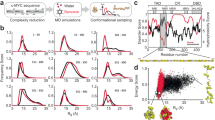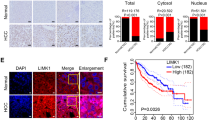Abstract
The TRK-T3 oncoprotein, isolated from a human papillary thyroid tumor, arises from the fusion between the N-terminal domain of the TFG gene and the tyrosine kinase domain of the NTRK1 receptor. The 68 kDa TRK-T3 oncoprotein displays a constitutive tyrosine kinase activity resulting in its capability to transform NIH3T3 cells. The TFG portion of TRK-T3 contains a coiled-coil domain, which mediates protein oligomerization essential for the oncogene constitutive activation, and several consensus sites for protein interaction. In this study, we investigate the role of TFG sequences outside the coiled-coil domain on TRK-T3 activation, We constructed four mutants carrying different deletions of TFG sequences and expressed them in mammalian cells. By performing biochemical and biological assays we demonstrated that all the deleted regions are required for TRK-T3 activation, as they are involved in different mechanisms such as protein processing, formation of stable and/or functional complexes, and possible interaction with other proteins. By constructing site-specific mutants, we demonstrated a crucial role for a PB1 domain and a considerable contribution of an SH2-binding motif in TRK-T3 oncogenic activation. This work establishes an important role for TFG sequences outside the coiled-coil domain in the activation of the thyroid TRK-T3 oncogene.
This is a preview of subscription content, access via your institution
Access options
Subscribe to this journal
Receive 50 print issues and online access
$259.00 per year
only $5.18 per issue
Buy this article
- Purchase on Springer Link
- Instant access to full article PDF
Prices may be subject to local taxes which are calculated during checkout






Similar content being viewed by others
References
Borrello MG, Pelicci G, Arighi E, De Filippis L, Greco A, Bongarzone I, Rizzetti MG, Pelicci PG and Pierotti MA . (1994). Oncogene, 9, 1661–1668.
Byrd DA, Sweet DJ, Pante' N, Konstantinov KN, Guan T, Shapire ACS, Mitchell PJ, Cooper CS, Aebi U and Gerace L . (1994). J. Cell Biol., 127, 1515–1526.
Canu N, Possenti R, Rinaldi AM, Trani E and Levi A . (1997). J. Neurochem., 68, 1390–1399.
Durick K, Yao VJ, Borrello MG, Bongarzone I, Pierotti MA and Taylor SS . (1995). J. Biol. Chem., 270, 24642–24645.
Fujioka Y, Matozaki T, Noguchi T, Iwamatsu A, Yamao T, Takahashi N, Tsuda M, Takada T and Kasuga M . (1996). Mol. Cell Biol., 16, 6887–6899.
Greco A, Fusetti L, Miranda C, Villa R, Zanotti S, Pagliardini S and Pierotti MA . (1998). Oncogene, 16, 809–816.
Greco A, Mariani C, Miranda C, Lupas A, Pagliardini S, Pomati M and Pierotti MA . (1995). Mol. Cell. Biol., 15, 6118–6127.
Grignani F, Gelmetti V, Fanelli M, Rogaia D, De Matteis S, Ferrara FF, Bonci D, Nervi C and Pelicci PG . (1999). Oncogene, 18, 6313–6321.
Ito T, Matsui Y, Ago T, Ota K and Sumimoto H . (2001). EMBOJ., 20, 3938–3946.
Johnston JA, Ward CL and Kopito RR . (1998). J. Cell. Biol., 143, 1883–1898.
Kaplan DR, Martin-Zanca D and Parada LF . (1991). Nature, 350, 158–160.
Klein R, Jing S, Nanduri V, O'Rourke E and Barbacid M . (1991). Cell, 65, 189–197.
Lupas A . (1996). Trends Biochem. Sci., 21, 375–382.
Lupas A, Van Dyke M and Stock J . (1991). Science, 252, 1162–1164.
Martin-Zanca D, Hughes SH and Barbacid M . (1986). Nature, 319, 743–748.
Matthews JM, Young TF, Tucker SP and Mackay JP . (2001). J. Virol., 74, 5911–5920.
McWhirter JR, Galasso DL and Wang JY . (1993). Mol. Cell. Biol., 13, 7587–7595.
Mencinger M and Aman P . (1999). Biochem. Biophys. Res. Commun., 257, 67–73.
Mencinger M, Panagopoulos I, Andreasson P, Lassen C, Mitelman F and Aman P . (1997). Genomics, 41, 372–331.
Miranda C, Greco A, Miele C, Pierotti MA and Van Obberghen E . (2001). J. Cell. Physiol, 186, 35–46.
Monaco C, Visconti R, Barone MV, Pierantoni GM, Berlingieri MT, De Lorenzo C, Mineo A, Vecchio G, Fusco A and Santoro M . (2001). Oncogene, 20, 599–608.
Pierotti MA, Bongarzone I, Borrello MG, Greco A, Pilotti S and Sozzi G . (1996). Genes Chromosones Cancer, 16, 1–14.
Possenti R, Di Rocco G, Nasi S and Levi A . (1992). Proc. Natl. Acad. Sci. USA, 89, 3815–3819.
Roccato E, Miranda C, Ranzi V, Gishizky ML, Pierotti MA and Greco A . (2002). Br. J. Cancer, 87, 645–653.
Rodrigues GA and Park M . (1993). Mol. Cell. Biol., 13, 6711–6722.
Rodrigues GA and Park M . (1994). Curr. Opin. Genet. Develop., 13, 6711–6722.
Terasawa H, Noda Y, Ito T, Hatanaka H, Ichikawa S, Ogura K, Sumimoto H and Inagaki F . (2001). Embo J., 20, 3947–3956.
Tong Q, Xing S and Jhiang SM . (1997). J. Biol. Chem., 272, 9043–9047.
Acknowledgements
We thank Miss Cristina Mazzadi for secretarial assistance. We thank Prof. Marchisio for advises on immunofluorescence procedure, Elena Luison for chromatography experiments and Dr Cristiano Rumio for immunofluorescence analysis by confocal microscopy. This work was supported by AIRC (Italian Association for Cancer Research).
Author information
Authors and Affiliations
Corresponding author
Rights and permissions
About this article
Cite this article
Roccato, E., Pagliardini, S., Cleris, L. et al. Role of TFG sequences outside the coiled-coil domain in TRK-T3 oncogenic activation. Oncogene 22, 807–818 (2003). https://doi.org/10.1038/sj.onc.1206189
Received:
Revised:
Accepted:
Published:
Issue Date:
DOI: https://doi.org/10.1038/sj.onc.1206189



